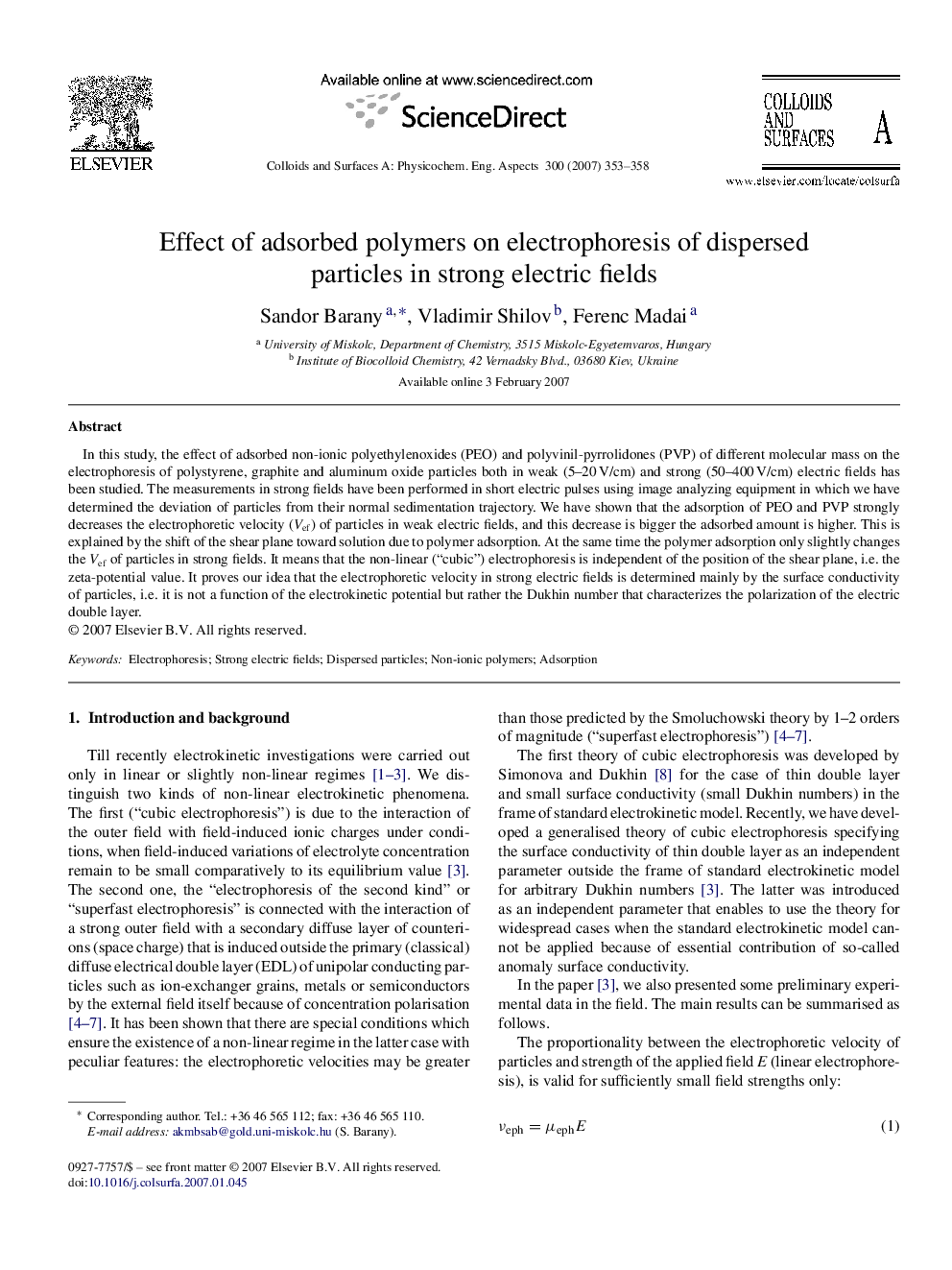| Article ID | Journal | Published Year | Pages | File Type |
|---|---|---|---|---|
| 597836 | Colloids and Surfaces A: Physicochemical and Engineering Aspects | 2007 | 6 Pages |
In this study, the effect of adsorbed non-ionic polyethylenoxides (PEO) and polyvinil-pyrrolidones (PVP) of different molecular mass on the electrophoresis of polystyrene, graphite and aluminum oxide particles both in weak (5–20 V/cm) and strong (50–400 V/cm) electric fields has been studied. The measurements in strong fields have been performed in short electric pulses using image analyzing equipment in which we have determined the deviation of particles from their normal sedimentation trajectory. We have shown that the adsorption of PEO and PVP strongly decreases the electrophoretic velocity (Vef) of particles in weak electric fields, and this decrease is bigger the adsorbed amount is higher. This is explained by the shift of the shear plane toward solution due to polymer adsorption. At the same time the polymer adsorption only slightly changes the Vef of particles in strong fields. It means that the non-linear (“cubic”) electrophoresis is independent of the position of the shear plane, i.e. the zeta-potential value. It proves our idea that the electrophoretic velocity in strong electric fields is determined mainly by the surface conductivity of particles, i.e. it is not a function of the electrokinetic potential but rather the Dukhin number that characterizes the polarization of the electric double layer.
